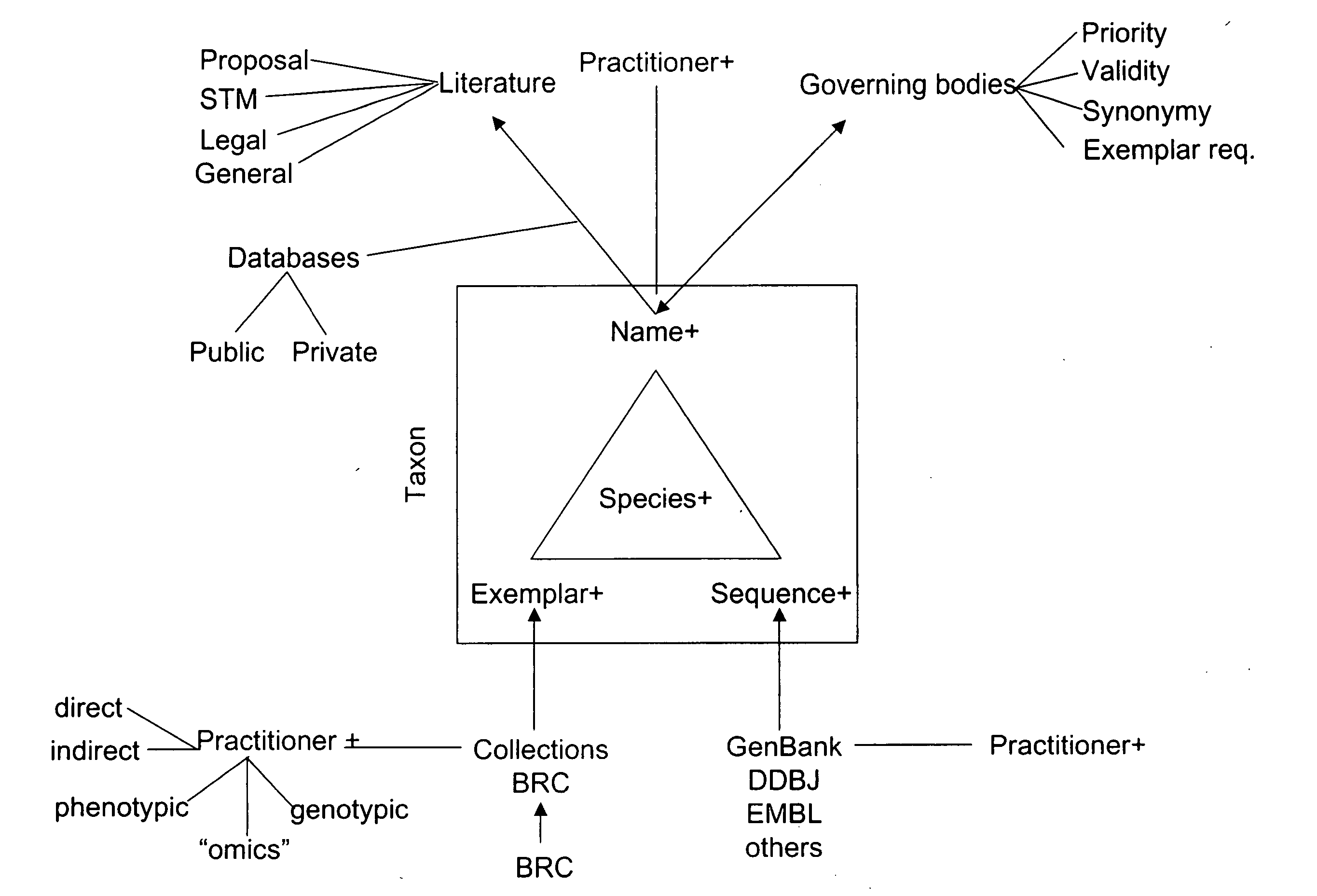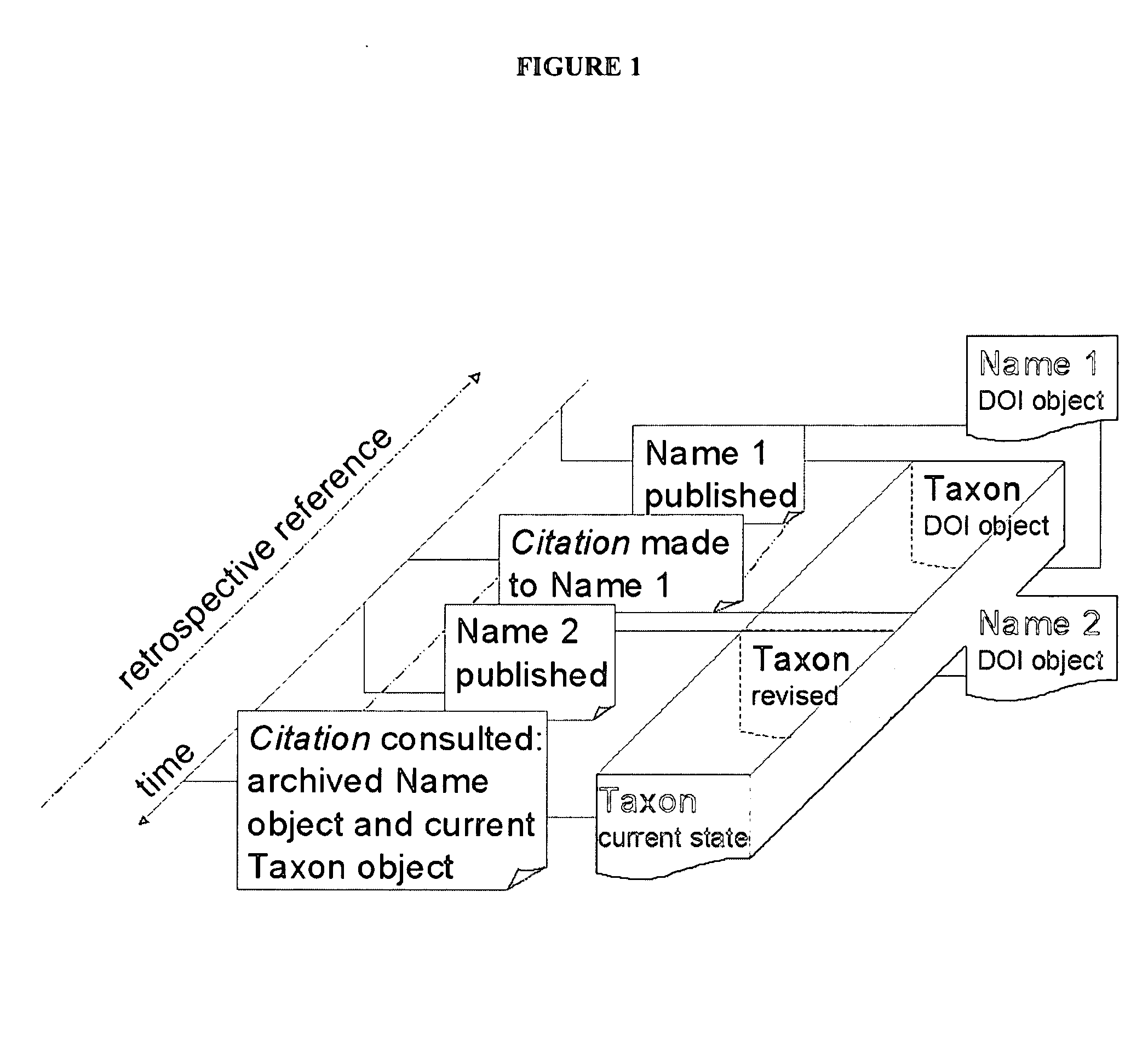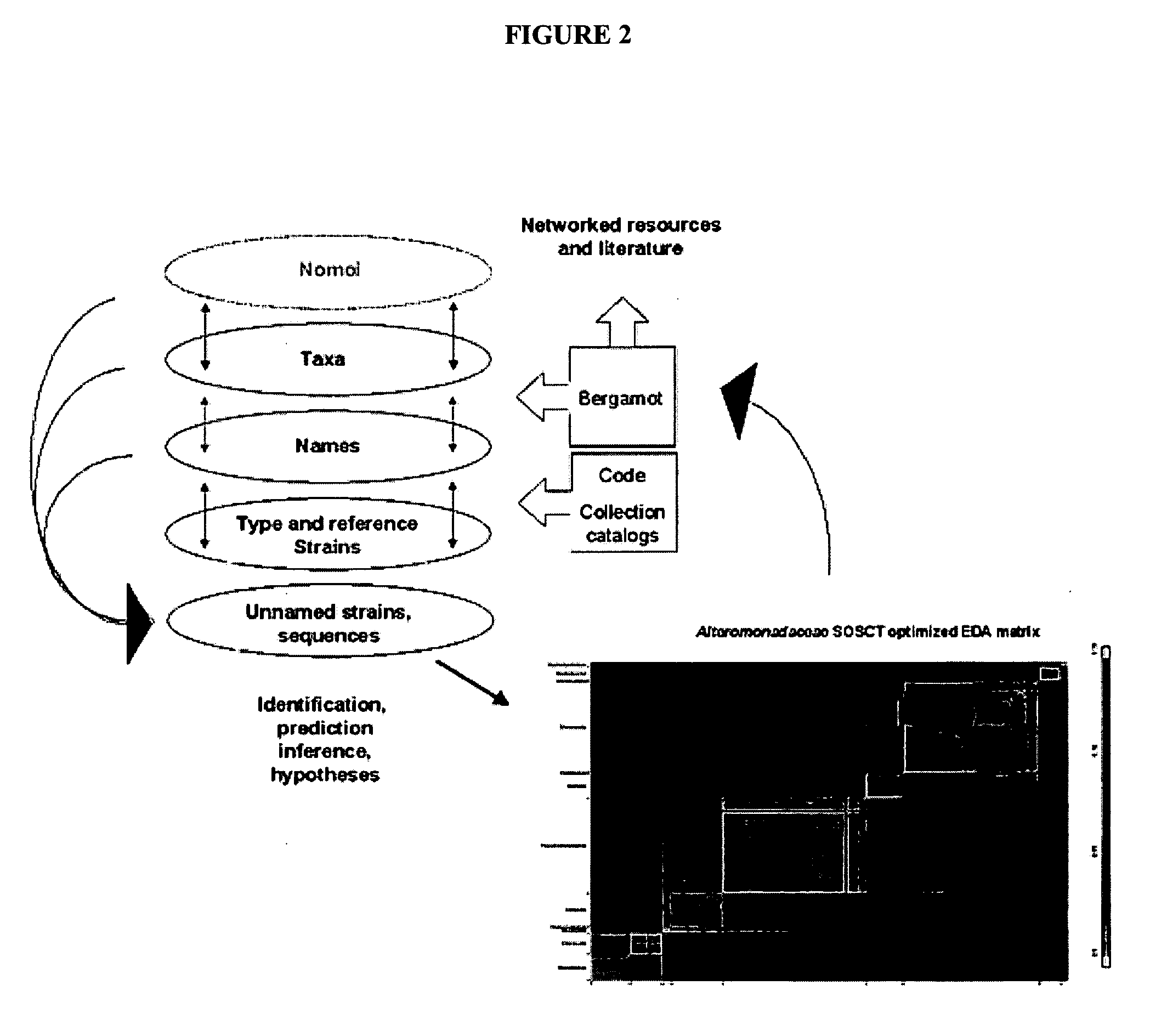Systems and methods for resolving ambiguity between names and entities
a system and entity technology, applied in the field of systems and methods for resolving ambiguity between names and entities, can solve the problems of frequent misapplication of names, no uniqueness nor permanentity of biological names, accumulation of dubious names in literature and databases, etc., and achieve the effect of reducing the current ambiguity
- Summary
- Abstract
- Description
- Claims
- Application Information
AI Technical Summary
Benefits of technology
Problems solved by technology
Method used
Image
Examples
example 1
Bergey's Accumulative Online Taxonomy (Bergamot)
[0090] Digital Object Identifiers explained. While the DOI identifies an information resource of any type (not necessarily digital; it could be a printed book), it typically resolves to a web page, which provides basic metadata about the information resource. That web page is an example of a DOI response page.
[0091] A DOI is registered together with the URL representing the identified resource. Hence, the identifier is separate from the location of a resource. In fact, the same resource may be retrievable from more than one location.
[0092] Example: Finneran et al. recently published a proposal for a new species of Rhodoferax capable of dissimaltory Fe(III) reduction, Rhodoferax ferrireducens. The proposal appears in the Int. J. System. Evol. Microbiol. 53: 669 and has the following DOI: 10.1099 / ijs.0.02298-0. [0093] 10.1099 is the prefix, which identifies Society for General Microbiology as the naming authority; [0094] ijs.0.02298-0...
example 2
Multiple Resolution of DOIs
[0102] DOI based citation example. An online journal article exits in which the author cites Name 1 by its Bergamot DOI. Following publication of this article, Name 1 is deprecated by the publication of Name 2. The publication of Name 2 causes three changes in Bergamot: The object for Name 1 changes its type to ‘deprecated’, the Taxon object associated with it is revised, and a new object for Name 2 is created. Now, when readers consult the article and follow the DOI Name reference, they access the revised Taxon object, which shows not only the current circumscription of the Taxon, but also the circumscription as it was when cited by the author of the article (FIG. 1).
[0103] A dynamic menu offers forward links to a more recent information object. Using the IDF's multiple-resolution technology, readers of the article would see an addition to the Name citation (for example a menu displayed by mousing over it) that could warn that the Name is now deprecated...
example 3
Bergamot Model of Continuous Emended Taxonomic Information
[0104] Before DOIs, scientific publishers were hard pressed to collaborate in multiple bilateral agreements to link citations. Beyond traditional, digitized publishing mechanisms, taxonomic portal developers also need a generalized, robust linking mechanism for building nomenclatural and taxonomic information structures Bergamot provides a source of continuously emended taxonomic information. The connection between nomenclatural types (Exemplars), names and unidentified strains is strengthened through the use of routine realignments of all taxa using automated methodologies (FIG. 2). This allows for a more precise placement of unknown and / or misnamed or misplaced taxa using objective measures of taxonomic affinity. The output of such an algorithm is represented as a Bergamot Nomos and provides a means of regularly revising and updating the Bergamot system as well as the Taxonomic Outline of the Prokaryotes.
[0105] Portals in...
PUM
 Login to View More
Login to View More Abstract
Description
Claims
Application Information
 Login to View More
Login to View More - R&D
- Intellectual Property
- Life Sciences
- Materials
- Tech Scout
- Unparalleled Data Quality
- Higher Quality Content
- 60% Fewer Hallucinations
Browse by: Latest US Patents, China's latest patents, Technical Efficacy Thesaurus, Application Domain, Technology Topic, Popular Technical Reports.
© 2025 PatSnap. All rights reserved.Legal|Privacy policy|Modern Slavery Act Transparency Statement|Sitemap|About US| Contact US: help@patsnap.com



